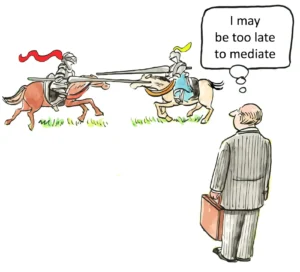Valuation and Recovery: Fully Determining the Worth of a Serious Injury Claim
An accident causing severe injury can dramatically alter a victim’s life and financial stability. When facing astronomical bills—from immediate medical interventions to long-term rehabilitation and lost wages—it is crucial to ensure the claim secures comprehensive financial recovery. The ultimate compensation achieved depends heavily on expert analysis and meticulous valuation from the earliest stages. Understanding this process of valuation is the necessary first step toward protecting a victim’s future.
Defining the Scope of Life-Altering Injuries
A personal injury case shifts from standard to serious when the consequences extend beyond temporary inconvenience, leading to permanent damage, lifelong care needs, or wrongful death. While specific legal statutes define thresholds for severity, the true financial implication of a catastrophic injury demands a legal approach focused on projecting future medical and financial costs precisely. Injuries such as traumatic brain trauma, spinal cord damage, or severe burns necessitate this comprehensive strategy.
Statistically, fewer than 5% of personal injury cases proceed to a full trial, emphasizing the critical importance of accurate valuation and negotiation during the pre-litigation phase for securing equitable compensation. A key component of evaluating a serious injury case is life-care planning, which involves calculating costs over the victim’s projected lifespan, encompassing future surgeries, specialized in-home care, mobility aids, and therapeutic equipment. Without this holistic accounting, the potential settlement value will likely fail to meet long-term needs.
The Critical Importance of Early Case Valuation
When a victim suffers a severe injury, insurance carriers often quickly initiate contact with a low offer. They rely on the victim’s immediate financial stress to encourage a swift, inexpensive settlement. Accepting an initial offer without professional valuation constitutes one of the most financially damaging errors a victim can make. The true settlement value of the claim must account for every anticipated future expense, not just bills currently sitting on the victim’s desk.
Legal professionals understand the substantial cost associated with a life-changing injury. For instance, car accident lawyers New York City know that a pedestrian accident victim will need long-term physical therapy, which can cost hundreds of thousands of dollars over decades. Data consistently indicates that claimants who receive professional legal representation typically obtain settlements significantly higher—often two to three times more—than those who attempt to manage the claims process on their own. It is a common misconception that a claim’s worth is limited only to current medical debt; however, compensation must also cover income loss over a working lifetime and the profound daily suffering endured.
The Pillars Supporting High-Value Compensation
To establish the maximum recovery possible, legal counsel develops the case value based on three distinct categories of damages. The calculated amount must accurately reflect the complete scope of the harm sustained.
The first pillar involves Economic Damages, which are objective, measurable costs. This includes calculating all past medical expenses, estimating necessary future medical care, quantifying lost wages, and assessing the loss of future earning capacity. This projection often necessitates collaboration with life-care planners and forensic economists. The second pillar focuses on Non-Economic Damages, which provide compensation for intangible losses. This subjective component accounts for physical pain, emotional distress, the loss of companionship and services of a spouse (loss of consortium), and loss of enjoyment of life. Since this is often the most substantial component of the final compensation, it requires skillful and compelling advocacy. The third pillar is Punitive Damages. These are only relevant in specific cases, such as those involving extreme recklessness or willful disregard for safety, like in some catastrophic drunk driving incidents. Punitive damages are not intended to compensate the victim but to punish the defendant and deter similar misconduct in the future.
Expert-Driven Analysis for Value Maximization
To truly maximize a claim, particularly those stemming from vehicular accidents or third-party negligence, legal teams rely on a network of external experts. For example, in vehicular accident cases, legal counsel must work with accident reconstructionists to establish fault and, crucially, collaborate with medical specialists and vocational experts to prove damages. Consider a professional cyclist in Brooklyn who suffered a career-ending injury after being hit by a delivery truck. A dedicated New York bike accidents attorney must engage an economist to accurately calculate the lost income potential from a highly specialized career. The most effective legal representation understands that medical evidence alone is insufficient; experts must translate that evidence into financial figures that the court understands.
The Litigation Process Timeline: From Incident to Maximum Settlement Value
Understanding the timeline of a serious injury claim is essential for managing expectations. While a simple claim might resolve in months, a high-value catastrophic injury case often requires extensive investigation and discovery, which can take a year or more. The complexity of securing expert witness testimony and coordinating life-care plans adds necessary time. The process typically involves several stages: investigation and filing, where evidence is gathered and the lawsuit is formally filed; discovery, in which both sides exchange evidence and conduct depositions (sworn testimony); and mediation and negotiation, where the majority of cases resolve with a focus on a fair settlement value. If negotiation fails, the case proceeds to trial, though this outcome remains rare.
The Structure of Attorney Compensation
Facing enormous medical bills and an uncertain financial future is stress enough without worrying about upfront legal fees. This is why many legal practices utilize a personal injury law firm NY contingency fee basis. The contingency fee offers key advantages to the client: no legal fees or expenses are required upfront, and payment is only due if and when the attorney successfully obtains compensation. This model ensures that representation is accessible regardless of the client’s current financial status and directly aligns the attorney’s motivation with the client’s goal of achieving the highest possible settlement.
Understanding the Path to Resolution
Accurately valuing a severe injury claim is a comprehensive and strategic endeavor that requires specialized legal knowledge and significant resources. Individuals involved in this process should understand several crucial points. It is strongly advised not to accept any offer from an insurance company until a legal professional specializing in serious injuries has fully evaluated the claim. Furthermore, the case’s financial value must include all necessary compensation for future medical needs and the estimated loss of future income, which often requires expert analysis. Therefore, seeking counsel from firms with demonstrable success in securing substantial compensation for catastrophic injury matters is essential. Ultimately, understanding the valuation and legal process empowers victims to make informed decisions and secure the financial resources needed for their recovery and future well-being.













